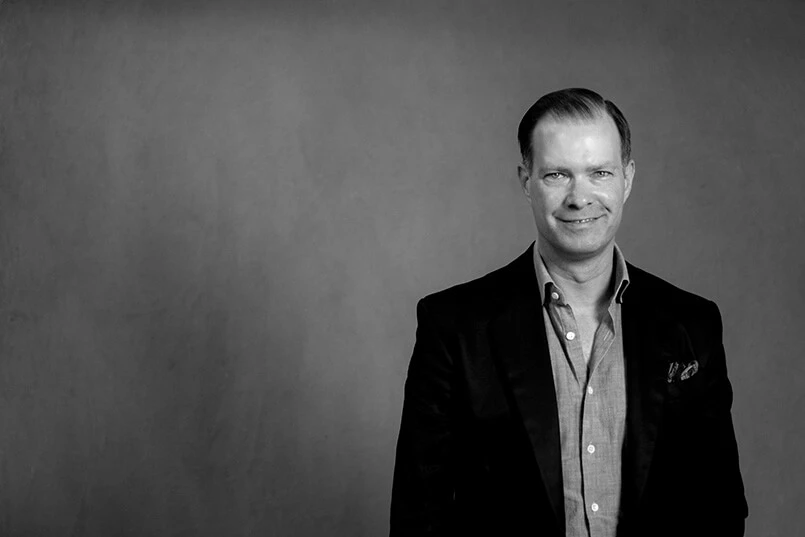Is it just me, or does the cost of advertising and marketing production continue to be the next hot topic after media transparency and data security in marketing?
There is not a day that goes by without a new article, podcast, or story on advertising production and the issues, innovations, and ideas on the best way to implement and manage production in the ‘digital age’.
While I recognise the irony of my writing this, TrinityP3 has been observing, commentating on, and benchmarking advertising production for almost two decades, and we have seen trends come and go.
So, what are the drivers behind the continued focus on advertising production, and why does the category appear to be getting disrupted? Well, I can provide at least ten things that have come together at this point to make this happen.
Some have been evolving for more than a decade, while others have appeared as if by magic. Whether directly or indirectly, they are due to the amazing technological innovations that are transforming marketing communications and advertising production in particular. So here they are, in no specific order.
1. The application of generative AI in the production process
Generative AI has revolutionised all aspects of business. However, it can potentially disrupt advertising, media, and marketing. AI will have a twofold impact when it comes to producing advertising and marketing content.
First, it expands creative possibilities, providing the ability to create images, visuals, and even moving footage that was never conceived possible within the confines of most advertisers’ budgets.
Secondly, AI-enabled automation will allow for production at scale to meet the increasing demand for content driven by digital and social media platforms. This is evidenced by our scope of work benchmarking, which shows annual brand assets increased from 200 – 250 on average per brand back in 2005 to more than 2000 per brand in 2020.
Of course, implementing AI in production will have significant challenges, particularly concerning copyright, performance rights, and passing off. However, the promise and early results suggest that this technology can completely disrupt marketing and their agencies’ production approach.
2. The rise of the production specialist companies
Production specialist companies have existed for years, but it is a money-making proposition when the holding companies create their own, such as Craft (McCann) and Hogarth (WPP). So why has this had such an impact on production?
Previously, most of the production specialists were positioned as transcreation companies who would work with the creative agencies to take the outputs of their advertising process, such as television masters, print artwork and the like and then not just translate but culturally align the work (often originated in English with a Western Cultural perspective) into a multitude of languages for a variety of countries to maximise the effectiveness of a global campaign.
However, the latest iterations see these production specialists taking the production responsibility from the agency and producing all aspects of the creative idea, including the original masters and all of the variation, at often a fraction of the price the agency could produce it.
3. The increase in production volume and decreased cost
Digital and social media channels have ferocious appetites for creative content. This, combined with the ability to serve particular creative executions to particular target audiences, has meant that the volume of creative assets required has increased exponentially.
Gone are the days when a television commercial, radio, and perhaps some print and point-of-purchase materials comprised the total campaign.
Now, there are multiple versions of television assets for pre-roll and online, along with hundreds of digital banner ads and thousands of social media updates. With this increase, you would expect to see an exponential increase in the cost of production, but you would be wrong.
The cost of this media is not only lower per version of creative because of the variations but also lower in general. Therefore, to maintain supposed working to non-working ratios, the budget for their advertising assets has fallen, even though many agencies have tried to maintain the premium, arguing that the economies of scale principle does not apply in this case.
4. The trend towards in-house agencies for major advertisers
Many marketers are either planning or have taken an increased number of agency services in-house because it provides them significant savings, greater control and improves speed to market.
However, the cost savings are two-fold: the reduced cost and accessibility to the production technology and the non-competitive cost models maintained by many agencies.
It is interesting that of all the companies that report having in-house agency capabilities, the vast majority do not actually have in-house strategy and creative, but instead have focused on bringing the production component in-house.
The reason is that this is where the greatest savings are often delivered, and they can continue to access the more specialist strategic and creative resources through their agencies rather than try to recruit and maintain these in-house.
5. The decrease in the cost of production technology
Technology has two effects on price. The first is something we have all witnessed and that is as new technology matures the cost of that technology decreases. The second is that technology can also make processes faster and labour more productive through automation and workflow management, reducing costs.
But up to now, there has been a disincentive for agencies to invest in these technologies as any reduction in cost of production would have led to a corresponding reduction in their fee, making this investment a disincentive.
This is because agencies continue to charge their clients on a cost-plus basis, and therefore, any investment in improving productivity delivers a double whammy: a reduction in fees and an inability to recover the technology investment cost.
An excellent example is agencies that insist on charging their clients for a studio operator to resize their digital display ads manually when there is a technology that will automate this process at a fraction of the cost.
6. The focus on the cost of agency retainers and fees
While procurement and finance can be particularly good at focusing on the total cost of the agency retainer and the cost per FTE, when it comes to production costs, most will simply negotiate a lower-priced rate card on an hourly or unit basis.
However, as we know, production costs can vary widely, and a half-price rate card for a production that takes three times longer delivers the agency a 50% premium.
It has often become the practice that when the agency has been negotiated into a discount retainer to win the business, the most obvious strategy is to use whatever technique is possible to recoup the fee reduction on the production.
This is an ideal opportunity because the volume of work often means that incremental increases across all production projects deliver significant increases and often fly under the radar of procurement and finance. (In one case, the marketers were complicit in approving production inflations after the agency came begging poor.)
Production can also be incredibly complex, making it difficult for marketers to make an informed decision on costs at the time of approval. This, combined with timeline pressures and approvals of incrementally higher production costs, becomes the agency norm.
7. The increased demand for greater production agility
The hot topic in many marketing teams is the desire to become more agile in delivering their marketing production. Shorter deadlines and greater flexibility lead to last-minute changes without the usual cost imposition, meaning that agencies are pressured to deliver faster and cheaper. At the same time, pride in their work compels them to maintain quality.
The often-traditional linear or cascade approach to production that operates in most silo agency production departments and their processes means that the only way of delivering this is to increase resources, as this allows them to increase costs to the client through the cost-plus compensation model.
But this is counter to the marketers desire to reduce not just time to market but also cost. This misalignment and often-conflicting expectations leads marketers to look for an alternative. (See in-house agencies or production specialists).
8. The rise of content marketing and production
Content marketing has existed for more than a century, but the Internet and digital technology have enabled brands and organisations to become publishers and broadcasters of their own content via video, podcasts, blogs, white papers, and more, leading to an explosion in the volume of content being created.
While some organisations create this content in-house (See in-house), others have turned to their advertising agencies to either create or supplement the creation of this content. But advertising production is not like that of a publisher or a broadcaster, where systems and processes are in place to produce large quantities of high-quality content fast and on limited budgets.
Advertising agencies are more likely to produce one-off campaigns or executions rather than a series of long-form videos or write and publish dozens of blog articles or podcasts a week.
The agency’s process and cost structure make this type of mass long-form production expensive because the process is labour-intensive compared to publishers and production companies that produce hours of video content or hundreds of pages (web or print) of content.
This is why in response there was a rise of the content agency, usually created from a heritage of publishing or video production or both.
9. The ability to off-shore production
Interestingly, when the industry trend is to increase in-house production capabilities for many global and multinational organisations, this means having in-house resources and off-shore to take advantage of skilled resources in lower-cost economies and different time zones.
Of course, the ability to off-shore production needs is not only in-house. Many suppliers offer off-shore production facilities and provide lower-cost, higher-quality resources in overseas markets.
Working in time zones also has the advantage of undertaking work overnight. These options exist in an increasing array of professional and technical sophistications, from simply producing content overseas on your behalf to fully integrated and collaborative production facilities operating in real-time.
Taking advantage of the global supply chain can manage everything from digital and technology builds to print artwork to video post-production to complete video productions. Of course, each has its strengths, weaknesses, and challenges, but the maturity of this option means there are now more options for all.
10. The role of production consultants
Yes, production consultants like TrinityP3 have had an impact on turning advertisers’ attention to finding new, faster, cheaper ways of producing the content they need as their needs have changed. These consultants are not only found outside organisations but have for many years existed within these organisations, overseeing the production of the advertising content.
The ideal role of the production consultant is to provide an independent, often third-party advisor. Not just on the production at hand but also looking for longer-term transformation opportunities to meet the evolving needs of the clients they work for or with.
With the rise of ad tech and mar tech platforms that can help manage the workflow of marketing content and assets within the organisation, the production consultant can provide the business case and input into the selection of the right solution for the organisation’s needs.
At the core of this industry, trends are not platforms that give the advertiser all of the control but allow the advertiser to manage the collaboration of the various production partners and maximise the value of the assets the production process creates.
Are you wondering if you are achieving optimal value in your production?
Read how our independent production consultancy can ensure maximum productivity and value from your budget.




